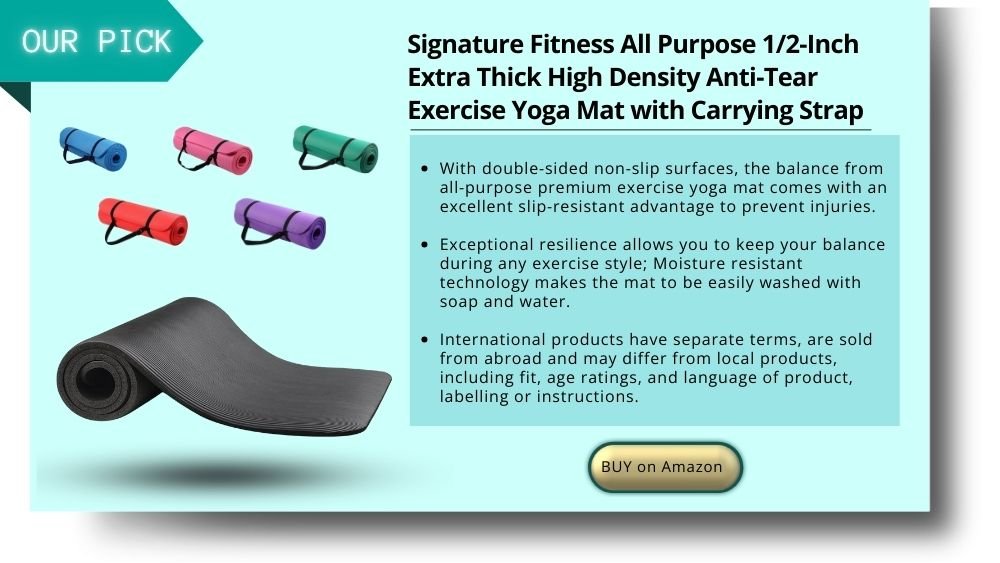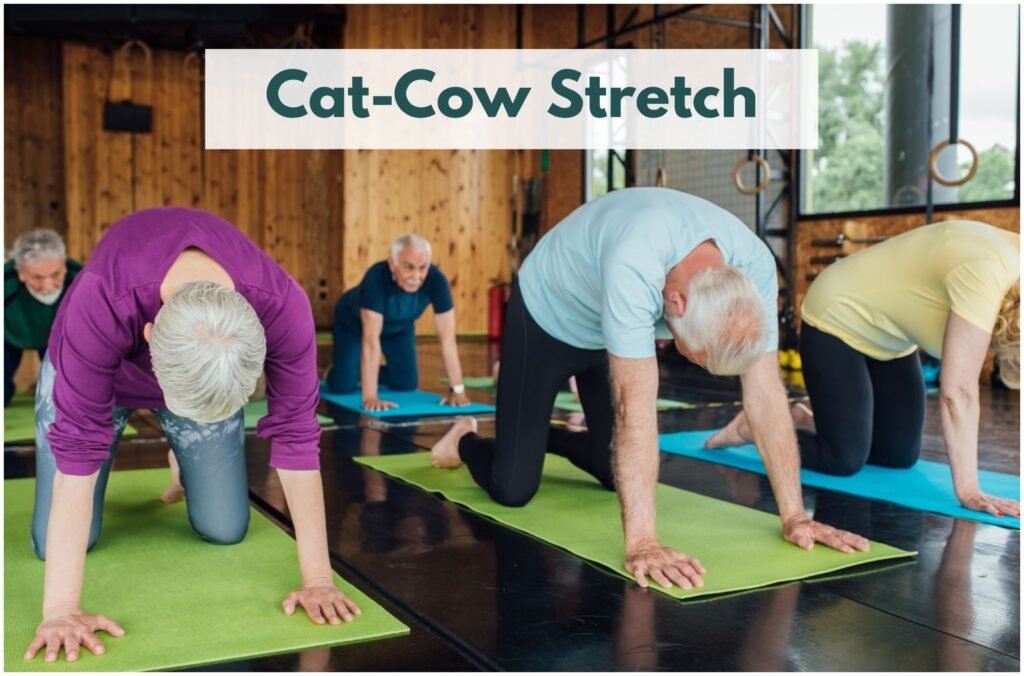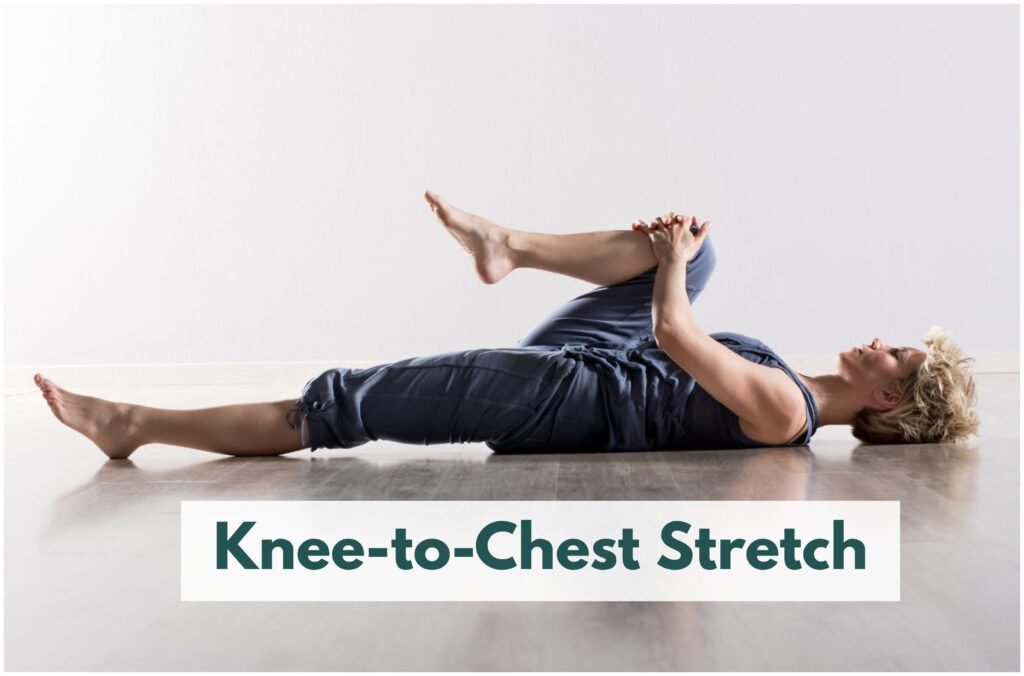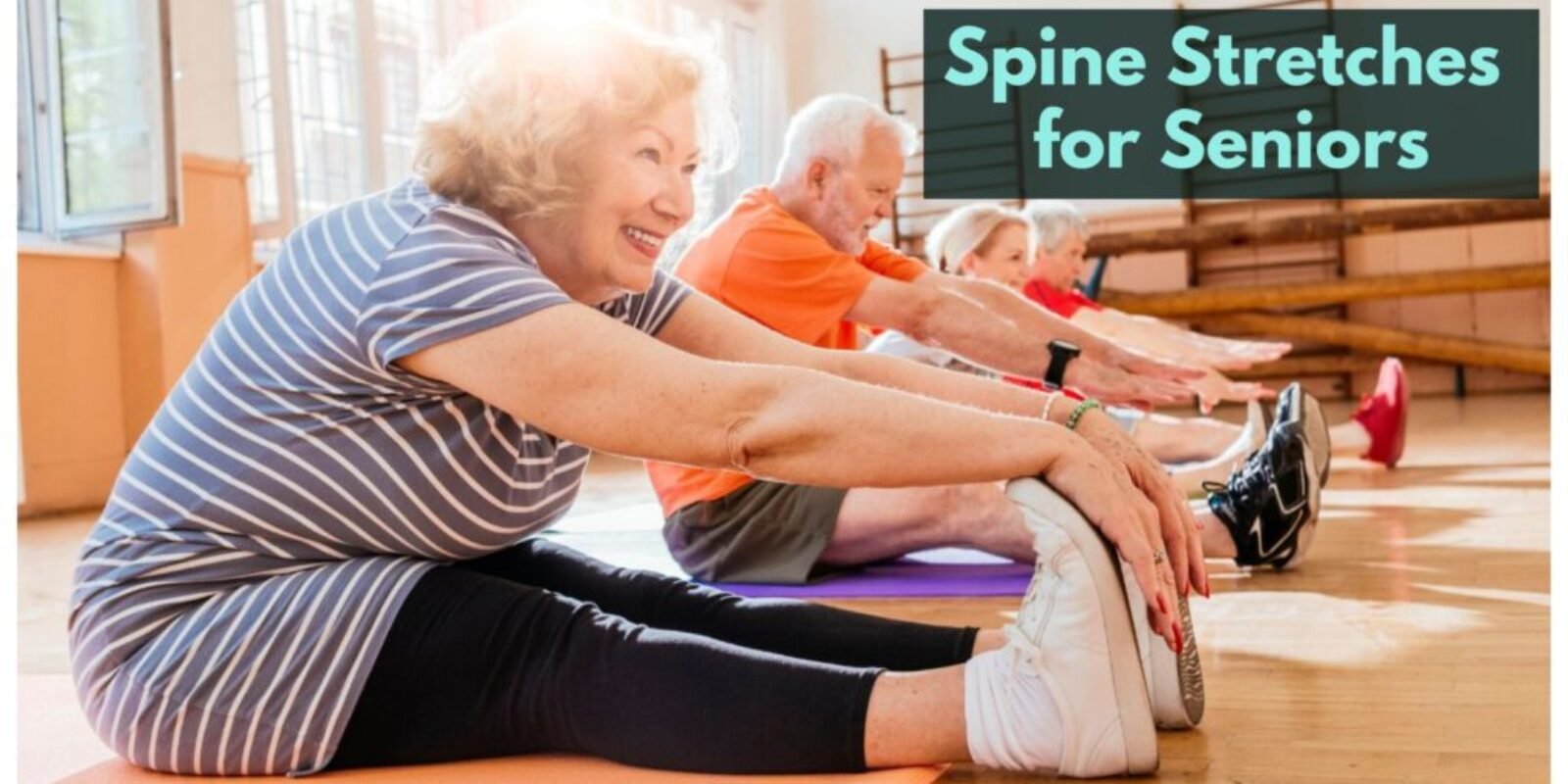Last Updated on June 27, 2025 by Julian Espinosa
Back discomfort doesn’t have to be your constant companion as you navigate your golden years. While it’s true that our spines experience more wear and tear over time, the solution isn’t accepting pain as inevitable—it’s taking gentle, proactive steps to keep your backbone healthy and flexible.
Imagine starting each morning feeling more limber, standing taller throughout the day, and ending each evening without that familiar ache in your lower back. This isn’t wishful thinking—it’s the reality that thousands of seniors have discovered through simple, safe stretching routines designed specifically for mature adults.
Recent research confirms what many have experienced firsthand: regular stretching can significantly improve spine mobility, reduce pain, and enhance overall quality of life for seniors. The best part? You don’t need expensive equipment or a gym membership to get started.
In this comprehensive guide, you’ll discover four gentle stretches that work wonders for spine health, along with practical daily habits that support your back throughout retirement. We’ll walk you through each movement step-by-step, share important safety considerations, and explain exactly how these stretches benefit your spine.
Whether you’re dealing with occasional stiffness or chronic discomfort, these evidence-based techniques can help you reclaim comfort and confidence in your daily activities. Ready to give your spine the care it deserves? Let’s explore how simple stretches can transform your relationship with back pain.
Let’s Get Our Spine Happy Again!
Caring for your spine isn’t just about physical health—it’s about feeling better mentally and emotionally, too. Taking a few moments each day to focus on stretching and nurturing your spine can have a profound impact on your mood, energy, and overall happiness.
Research shows that yoga-based stretching significantly improves physical function and health-related quality of life in mature adults. Whether you’re new to stretching or have some experience, these gentle movements can help keep your spine smiling!
Prefer to listen rather than read?
Your spine supports you in everything you do—it allows you to move, helps maintain good posture, and keeps you active. However, everyday activities like sitting for extended periods, carrying bags, or even sleeping in an awkward position can create tension and discomfort.
That’s why it’s essential to incorporate gentle stretches into your routine. These stretches help improve strength and flexibility, which can help prevent back pain. Nobody wants to deal with that kind of discomfort, and fortunately, these simple stretches can help alleviate these issues.

Why Stretching is Key for a Healthy Spine?
Gentle stretching offers remarkable benefits for your spine health. These movements help improve blood circulation, maintain flexibility, and strengthen the muscles that support your back. Plus, they’re excellent for relieving tension and maintaining proper posture.
Stretching the soft tissues in the back, legs, and buttocks can help mobilize the spine, and increased range of motion can assist with back pain relief. Regular stretching can also help reduce the likelihood of dealing with issues like herniated discs, sciatica, or persistent lower back pain.
Here are five key reasons why stretching is especially important for mature adults to maintain spine health:
- Reduces Risk of Injury: Yoga-based exercise improves balance and mobility in people aged 60 and over, helping maintain flexibility and prevent injuries. Adding gentle yoga or tai chi movements can improve balance and reduce fall risk.
- Improves Posture: These stretches can improve your posture, reduce pain, and strengthen muscles for better alignment. Focus on movements for the back, neck, and shoulders to correct habits and enhance breathing.
- Increases Mobility: Regular stretching exercises improve spine flexibility, reduce stiffness and pain, and may help prevent conditions like spinal stenosis or herniated discs. You can maintain mobility and perform daily tasks more easily with consistent practice.
- Promotes Relaxation: Stretching helps improve sleep quality, boosts mental clarity, and reduces stress. You can prioritize self-care by including these stretches in your daily routine for relaxation and improved well-being.
- Enhances Balance: Modified chair-yoga has been shown to be safe and feasible for seniors at risk for falls, improving balance and stability while reducing injury risk.
Easy Stretches for Seniors to Soothe Back Pain
Back discomfort is a common concern that many mature adults face, and it can significantly impact quality of life. However, there are several simple stretches you can do to help ease discomfort and improve overall mobility.
Here are four gentle stretches that can ease back pain and improve comfort:
Cat-Cow Stretch
The cat-cow stretch is a gentle movement that can help relieve tension in your spine, improve posture, and increase flexibility. This flowing movement is perfect for warming up your spine.

- Begin on your hands and knees, with wrists directly under shoulders and knees directly under hips. Spread your fingers wide and point them forward, with toes tucked under.
- As you inhale, slowly arch your spine downward toward the floor, lifting your head and tailbone up toward the ceiling. This is the cow position.
- As you exhale, slowly round your spine upward toward the ceiling, tucking your chin toward your chest and pressing your tailbone down toward the floor. This is the cat position.
- Continue flowing between these positions, inhaling into cow and exhaling into cat. Move slowly and smoothly, focusing on the sensation of your spine moving and stretching.
- Repeat for 5-10 breaths, or for as long as feels comfortable.
Important considerations: Listen to your body and move slowly and gently, never forcing yourself into any position that feels uncomfortable or painful. If you experience any discomfort, stop immediately and consult with your healthcare provider.

Knee-to-Chest Stretch
The knee-to-chest stretch is an excellent way to reduce tension in the lower back and hips while increasing flexibility and range of motion. It can be done easily at home without any equipment.
How to perform:
- Lie flat on your back with your legs extended.
- Slowly bring one knee up toward your chest.
- Clasp your hands around your knee and gently pull it toward your chest.
- Hold the stretch for 15-30 seconds while breathing deeply.
- Slowly release your leg and repeat with the other leg.
- Repeat the stretch on each leg 2-3 times.
Helpful tips:
- Keep your neck and shoulders relaxed throughout the stretch
- Avoid pulling your knee too forcefully—only stretch to a comfortable level
- You can place a towel or cushion under your head for added comfort

Precautions
- If you have any knee or hip injuries, consult your doctor or physical therapist before attempting this stretch.
- Stop it immediately if you experience any pain or discomfort.
- Do not perform this if you have recently undergone any surgery in the lower back or hips.
Child’s Pose
Child’s pose is a gentle position commonly used for relaxation and stretching. It can help release tension in the back, neck, and shoulders while promoting calm and relaxation.
How to perform:
- Start on your hands and knees with hands placed directly beneath your shoulders and knees directly beneath your hips. Spread your fingers apart with palms flat on the ground.
- Slowly shift your weight back, lowering your buttocks toward your heels. Your arms should reach forward as you do this, allowing your torso to stretch out.
- Extend your arms as far as comfortable, keeping your palms flat on the ground. This helps lengthen your spine and stretch your back muscles.
- Allow your forehead to rest on the ground as you extend your arms forward. This helps relax your neck and shoulders.
- Hold the position for 30 seconds to 1 minute, taking deep breaths and relaxing as much as possible.
- To release, slowly walk your hands back toward your knees, lifting your torso upright.
Important note: While child’s pose is generally safe, it may not be appropriate for those with certain conditions, such as knee or back concerns. Always check with your healthcare provider before starting any new exercise program.
Cobra Pose
The cobra pose is a gentle backbend that helps stretch and strengthen the spine while improving posture. This movement can help counteract the effects of prolonged sitting.
How to perform:
- Lie face down on the floor with legs extended behind you and palms on the ground, slightly below your shoulders.
- Press the tops of your feet and thighs into the floor, and gently engage your glutes.
- Inhale and slowly lift your chest and head off the floor, keeping your elbows close to your sides.
- Use the strength of your back muscles to lift your torso, keeping your shoulders relaxed and away from your ears.
- Look straight ahead, or tilt your head back slightly to deepen the stretch.
- Hold the pose for 15-30 seconds, breathing deeply.
- To release, exhale and slowly lower your chest and head back to the floor.
Helpful tips:
- Avoid lifting your shoulders up to your ears, as this can cause neck and shoulder tension
- Keep your elbows close to your sides and use your back muscles to lift your torso
- Only lift your chest as high as feels comfortable, without causing strain or pain
- Breathe deeply throughout the pose
Regular practice of cobra pose can improve spinal flexibility and strength, reduce back discomfort, and enhance posture.

Daily Routines to Keep Your Spine in Shape
In addition to incorporating regular stretches for seniors into their daily routine, many other daily habits can help to maintain a healthy spine as you age. Here are some simple habits to consider:
Practice Good Posture
Maintaining good posture is crucial for spine health and preventing back pain. Pay attention to your posture throughout the day, whether sitting, standing, or walking.
When sitting, sit up straight with shoulders back, avoiding slouching or hunching over. Your back should be aligned against the chair, and both feet should be flat on the ground. Consider using a cushion or rolled towel to support your lower back.
When standing, distribute your weight evenly on both feet and avoid locking your knees. Pull your shoulders back and down, with your head held high.
Avoid staying in one position for extended periods and take breaks to stretch and move around.
Stay Active
Stay active with short walks or gentle stretches to prevent stiffness and improve spine circulation. Consult your doctor before starting any exercise routine, especially if you have back concerns or other health conditions.
Use Proper Lifting Techniques
Lifting heavy objects improperly can cause back pain and injuries. To prevent this, use proper lifting techniques.
When lifting heavy objects, avoid bending your back and instead use your legs. Stand close to the object with feet shoulder-width apart. Squat down by bending your knees while keeping your back straight. Grasp the object with both hands and slowly lift it up, keeping it close to your body.
When setting the object down, reverse these steps, bending your knees and lowering the object slowly and carefully.
Sleep on a Supportive Mattress
Getting quality sleep is essential for spine health, and a supportive mattress plays a significant role. A properly supportive mattress helps maintain your spine’s natural curvature, preventing strain or pressure points.
Consider replacing your mattress every 8-10 years to ensure it continues providing necessary support. An worn-out mattress can no longer offer adequate support, leading to discomfort and pain.
Take Breaks From Sitting
Prolonged sitting can put pressure on your spine and lead to back pain. Your spine is designed to move, stretch, and bend. Sitting for hours can strain your back muscles, joints, and ligaments, causing stiffness and soreness.
Take regular breaks to stand up, stretch, and move around. Even brief movement breaks can make a significant difference in how your back feels.
By incorporating these habits into your daily routine, you can help keep your spine healthy and reduce the risk of pain or injury as you age. Always listen to your body and consult with your healthcare provider if you experience any discomfort or pain.

Conclusion
Taking care of your spine as you enjoy your retirement years is one of the best gifts you can give yourself. The gentle stretches we’ve discussed—cat-cow, knee-to-chest, child’s pose, and cobra pose—are like daily vitamins for your back health. Combined with smart daily habits, these simple movements can help you stay flexible, stand tall, and feel more comfortable in your body.
Remember, consistency is more important than intensity. Even a few minutes of gentle stretching each day can make a meaningful difference in how you feel. Your spine has carried you through decades of life experiences—now it’s time to show it some appreciation.
Are you ready to start your journey toward a happier, healthier spine? Have you tried any of these stretches before, or do you have other techniques that work well for you? We’d love to hear about your experiences and answer any questions you might have—please share your thoughts in the comments below!
Disclaimer
The content provided on MySeniors.World is for informational purposes only and is not intended as either financial or medical advice. Always consult a qualified professional before making any investment or health-related decisions.
Posts may contain affiliate links, meaning we earn a commission – at no additional cost to you, if you click through and make a purchase. Your support helps us continue providing valuable content.
FAQ: Stretches for Seniors
- How often should I do these spine stretches?
- Aim for 10-15 minutes of gentle stretching daily, or at least 3-4 times per week. Consistency is more important than duration—even 5 minutes daily can provide benefits.
- Is it normal to feel some discomfort when starting these stretches?
- Mild muscle tension or stiffness is normal, but sharp pain is not. You should feel a gentle stretch, not pain. If you experience sharp or persistent pain, stop immediately and consult your healthcare provider.
- Can I do these stretches if I have arthritis?
- Many people with arthritis find gentle stretching helpful, but it’s essential to consult your doctor first. They can help determine which stretches are appropriate for your specific condition and limitations.
- What’s the best time of day to do spine stretches?
- Many people find morning stretches help them feel more limber throughout the day, while evening stretches can help release tension. Choose a time that works consistently with your schedule.
- Do I need special equipment for these stretches?
- No expensive equipment is needed. A yoga mat or towel for floor exercises and a sturdy chair for seated stretches are sufficient. Some people find a small pillow helpful for comfort.
- How long before I notice improvements in my back pain?
- Many people notice some improvement within 2-4 weeks of regular stretching. However, individual results vary, and significant improvements may take 6-8 weeks of consistent practice.
- Are these stretches safe if I’ve had back surgery?
- Always consult your surgeon or physical therapist before beginning any new exercise program after back surgery. They can provide guidance on which movements are appropriate for your recovery stage.
- Can I do these stretches in a chair if I have mobility limitations?
- Yes! Many of these stretches can be modified for seated positions. Child’s pose can be done by folding forward in a chair, and gentle spinal movements can be performed while seated.
References
- Mayo Clinic. (2023, August 15). Back exercises in 15 minutes a day. https://www.mayoclinic.org/healthy-lifestyle/adult-health/in-depth/back-pain/art-20546859
- National Center for Biotechnology Information. A Systematic Review of the Effects of Exercise and Physical Activity on Non-Specific Chronic Low Back Pain. https://www.ncbi.nlm.nih.gov/pmc/articles/PMC4934575/
- Medical News Today. (2023, November 30). Seated back pain stretches for seniors. https://www.medicalnewstoday.com/articles/seated-back-pain-stretches-for-seniors
- Journal of Orthopaedic & Sports Physical Therapy. (2021). Interventions for the Management of Acute and Chronic Low Back Pain: Clinical Practice Guidelines. https://www.jospt.org/doi/10.2519/jospt.2021.0304
- Age and Ageing, Oxford Academic. (2015). Yoga-based exercise improves balance and mobility in people aged 60 and over: a systematic review and meta-analysis. https://academic.oup.com/ageing/article/45/1/21/2195366
- International Journal of Behavioral Nutrition and Physical Activity. (2019). The effects of yoga compared to active and inactive controls on physical function and health related quality of life in older adults. https://ijbnpa.biomedcentral.com/articles/10.1186/s12966-019-0789-2
- PMC. Safety and feasibility of modified chair-yoga on functional outcome among elderly at risk for falls. https://pmc.ncbi.nlm.nih.gov/articles/PMC3410195/
- Harvard Health Publishing. (2024, June 21). Stretching and strengthening exercises to relieve and prevent lower back pain. https://www.health.harvard.edu/pain/stretching-and-strengthening-exercises-to-relieve-and-prevent-lower-back-pain



